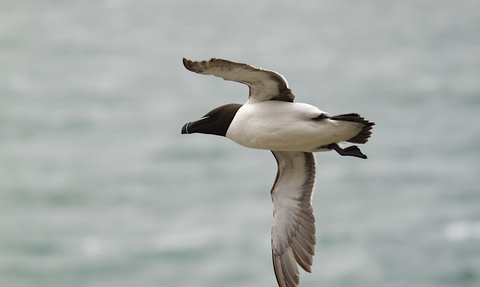
Tom Hibbert
Day 7: Coastal Birds
Welcome to day 7
Today we're going to learn about three birds you might spot at the coast this spring. With a varied and extensive coastline, there are lots of places in Dorset you could visit to try spotting these birds, including the rocky cliffs around Swanage Bay and along the coastline of the Purbecks.
Shag
Gulosus aristotelis
Statistics
Length: 72-80cm
Wingspan: 90-105cm
Weight: 1.75-2.25kg
Average lifespan: 12 years
How to identify
Smaller than a cormorant, a shag has dark green, shiny plumage, a crest and a narrower bill with a yellow gape.
Did you know?
Shags can dive down to depths of up to 45m to catch fish from near the bottom of the sea. Unlike gannets, they dive from the surface of the sea. They also eat crustaceans and molluscs.
Rock pipit
Anthus petrosus
Statistics
Length: 16-17cm
Wingspan: 25cm
Weight: 24g
Average lifespan: up to 5 years
How to identify
A streaky, dark grey-brown bird, the rock pipit has blackish legs. The similar-looking meadow pipit is smaller and has pale, flesh-coloured legs.
Did you know?
The closely related water pipit nests in the Alps and other European mountains and is a rare winter visitor to marshland in southern England.
Razorbill
Alca torda
Statistics
Length: 37-39cm
Wingspan: 63-67cm
Weight: 590-730g
Average lifespan: 13 years
How to identify
The razorbill is black above and white below, with a short, thick bill that has distinguishing white lines across the end. In winter, razorbills have white faces. The similar-looking guillemot is chocolate-brown in colour, and has a longer and thinner bill.
Did you know?
The razorbill's closest relative was the great auk, which became extinct in the UK in 1840 and was last sighted in 1852 off Newfoundland. It was hunted for meat, feathers, fat and oil, and as it became more scarce, was finally driven to extinction by specimen collectors.








